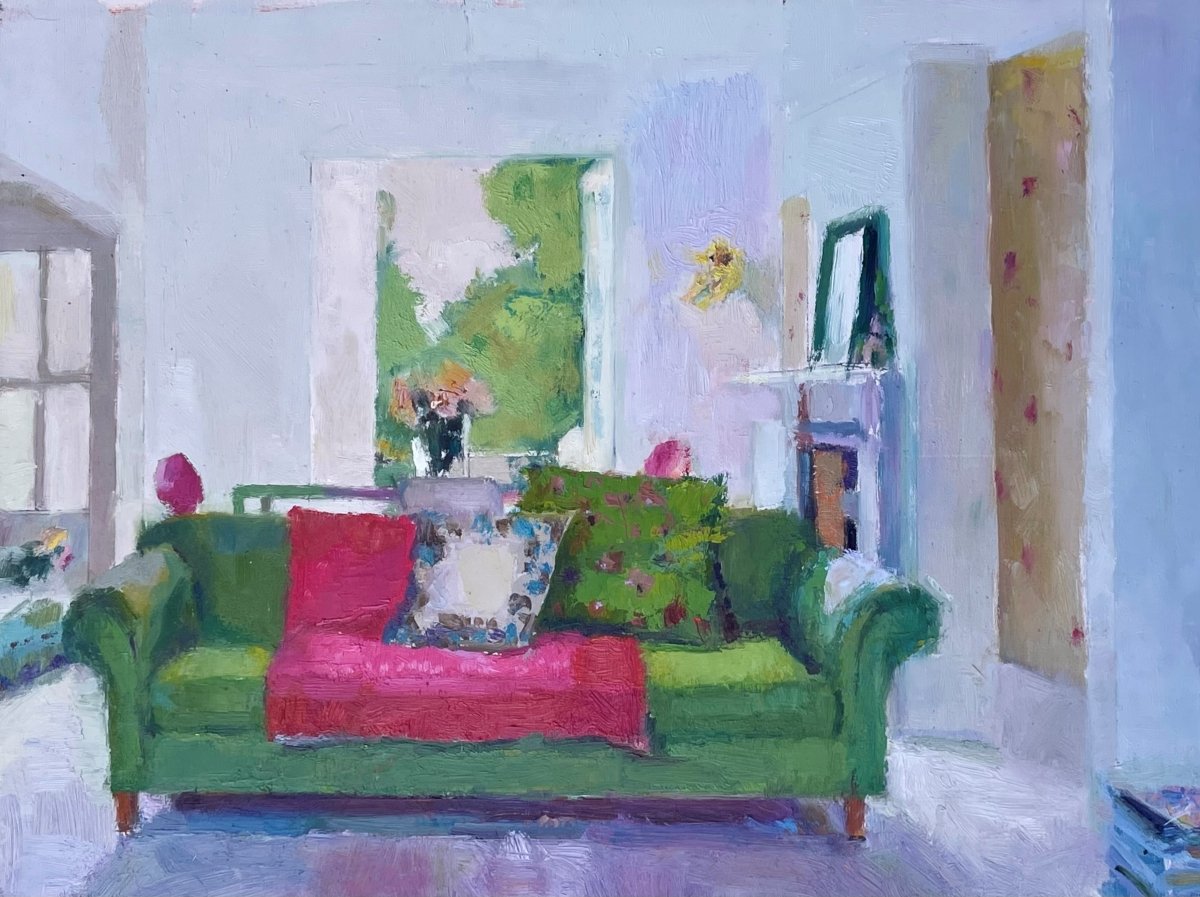To see the original article on the Door County Pulse website, please click HERE
Deliberate by Design: How Paula Swaydan Grebel navigates the artistic process
By Tom Groenfeldt, April 21st, 2022
Paula Swaydan Grebel approaches her painting very deliberately: sorting through images, making selections, doing small drawings and then making a sketch on paper — a sketch she may enlarge, shrink or cut apart to insert a new image in the middle. Only then does she begin to transfer the image to canvas in oil paint.
But she didn’t always work like this. In another lifetime, she describes a way of working that was very loose.
“I was trained to just go and do the work,” said Swaydan Grebel, who has a BFA from California State University–Long Beach. She and her husband, Randy, moved to Plymouth, Wisconsin, for work and bought a place in Egg Harbor about 18 years ago. They retired there full time two years ago.
Over the years, Swaydan Grebel continued her art education and credits Catherine Kehoe, a Massachusetts-based contemporary artist and painter, with helping her to organize, structure and gear her work toward her own temperament.
Before arranging her workflow to fit her way of working, “I found that I was always fixing the painting,” Swaydan Grebel said. “The design wasn’t right; the drawing wasn’t right; the color wasn’t right. A lot ended up in the trash. Kehoe had a process that connected with my personality. I think a lot. I’m methodical. I enjoy the designing portion.”
Instead of working piecemeal, Swaydan Grebel said she likes to see images in a group and then work on the design. That starts with thumbnail sketches, about two inches by two inches.
“These help me to understand the possibilities, to think past the image, and come up with a decent design,” she explained, adding that it can take weeks to create a drawing to transfer onto the canvas.
Her latest bit of education comes from her family.
“We have a new grandson – our first – and when I see him look at the world, it’s so cool,” Swaydan Grebel said. “That’s how I want to see things: the way a child does when it is all new.”
With the drawing complete, she then decides which colors to use.
“In every painting, I try a different set of colors,” she said. “It’s been a good challenge.”
As an aid in remembering the color choices, Swaydan Grebel writes down the chosen colors in a book coordinated with the artwork.
“Finally, when I start painting, I will cover one section at a time. The middle of this process is when I want to wipe and correct. I resist this desire,” she said. “Once the canvas surface is covered from top to bottom, it becomes a painting. I love that part. It’s magical!”
Swaydan Grebel’s paintings are infused with color and show a strong sense of design, expressed in color and texture. She has a strong interest in artists throughout history, making references in conversation to Bonnard, Morandi, Bruegel, Albers, Cézanne and Philip Guston – quite a range.
Now she’s intent on creating a body of work that consists of paintings of interiors.
“The interiors have a bit of landscape because there’s usually a window, and usually they have at least one still life in them,” Swaydan Grebel said. “I find it fun, exciting.”
To make it challenging, she has given up her full-range palette with multiple variations of each color, settling on yellow, blue, red and white.
Like many artists, she also seeks inspiration away from home. In the winter, she and Randy load up their Subaru Forester and head to California to visit family. The back of the car contains an easel, paint, turpentine and panels.
“My husband gets the back seat – well, I also take a little bit of that too,” Swaydan Grebel said. “Winter is a big chunk of my time; I can’t just not work” – especially this year, when she had a show at the Tory Folliard Gallery in Milwaukee opening in March. In Door County, her work is shown at Cappaert Contemporary in Egg Harbor.










